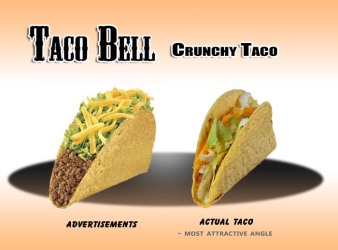Mediated communication affects all people around it even if it is not consciously perceived. Often, people forget to think about media as a manipulative force that embraces all sorts of techniques in order to control the public’s emotion, imagination and reasoning. In fact, this is the main reason why the majority of people often find themselves believing things even when logic tells them otherwise. This topic is not strange to my own personal experience; media has got me at many times in different places and through different ways. It is very easy to think about the times I have found myself realizing how ridiculously subtle and effective some type of media can be. Examples about how media has affected body image, violence, fear and even consumption are very common to the public nowadays, however media manipulation has trespassed the limits of ethical advertising in ways we don’t even realize.
By simply driving around in my car, I get really hungry by looking at billboards of well-prepared, delicious looking food that makes me salivate more than what might be consider normal. These pictures of fast food restaurants such as Subway, McDonalds, Taco Bell and Burger King, are so well crafted that people can even smell the food in just a couple of seconds. However, people who have been persuaded by these ads have felt just like me: disappointed.
The reason of such disappointment comes from the comparison between the pictures of the food advertisement and what fast food restaurants actually serve. It is impressive how media has managed to manipulate even something as essential for living and good health as it is food. We are tricked by pictures that activate our desire to satisfy our hunger because we don’t believe we can be lied to with something that is not just a pleasure. We trust the billboards, and we trust media. Photo of food manipulation has been so successful in driving up sales that it is now consider to be a professional career known as “food styling” as explained in the article, Have your cake – but don’t eat it!.
The advertising depicting the meal and the food people actually get is totally different. Typically, the time spent preparing the meal at the restaurants takes between 2-4 minutes, whereas the photo-shoot and the editing of the same meal in an advertisement last for hours. In the article previously mentioned, it is showed how there are many different techniques in order to create a delicious looking hamburger. This techniques include by are not limited to photoshoping imperfections, coloring the food more vividly and using glue in order for the food to stick together.
Just as Chuck Klosterman said in his article,It Will Shock You How Much It Never Happened, in which he argues about media persuasion, we are all part of media manipulation even if we don’t want to. We can’t escape from it.

